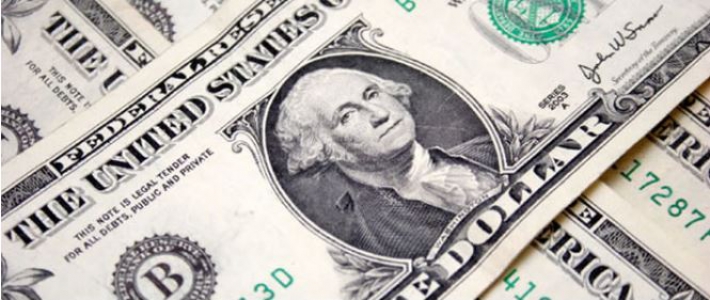by Mark Absher
Delivering excellent comprehensive cosmetic and restorative dentistry is not cheap. The comprehensive dentist first must be more expensively trained, then must have a more costly and experienced dental laboratory, and finally, must take more time to complete cosmetic and restorative procedures. The fee for excellent comprehensive dentistry has to be more than for “usual and customary” dentistry. But how much do we need to charge to make this type of dentistry profitable, while being fair to both the dentist and the patient?
When dentists discuss complex restorative and cosmetic procedures among themselves, the subject of fees is hardly ever brought up. While most dentists secretly explore “what the other guy is charging,” it’s considered taboo to ask a dentist “What’s your crown fee?” But let’s face it: If we are not charging a fair fee, we are either overcharging the patient or being underpaid and risk going out of business.
What is a fair fee? In our office, a fair fee covers all of our expenses, allows for a reasonable profit, and provides a finished result to the patient who benefits from adequate treatment time, the best materials, and the advanced capabilities of our dentist, laboratory technicians, and staff. The following is a method we have devised to determine a fair fee for our solo-practicing dentist.
It does not take into account hygienist and associate expenses and profit, as they should be figured separately.
Calculating Your Expenses
To calculate a fair fee, we need to look back at our history of expenses. Taking last year’s profit and loss statement from your accountant, add up the total expenses from each major category and combine the expenses into easy manageable categories. For example:
Expenses for 2010
Team $200,000
Laboratory $200,000
Facility $100,000
Dental Supplies & Equipment $100,000
Office $50,000
Marketing $50,000
Professional $50,000
Total Expense $750,000
Divide the total amount of expenses by the number of days worked during the past year, and then divide this sum by the number of hours worked per day. This expense figure represents the amount per hour it costs to do business before any profit is made.
For example, if you worked 192 days in 2010, the equation would look like this:
$750,000 ÷
192 (days worked) ÷
8 (hours worked) =
$488 per hour expense
How Much Should I Earn?
The next question we must ask ourselves is, “How much would I like to earn?” What is a fair salary, anyway? According to the United States Bureau of Labor Statistics, in 2008 the median salary for a dentist was $142,870 per year. This means half of the dentists in the United States made more than this amount and half made less. Salaries vary widely from region to region and from rural to urban locations.
The amount one would like to earn per year is a personal matter, and the amount you earn certainly doesn’t guarantee personal or professional happiness. It is fair to say most dentists would like to earn enough to have a comfortable living with enough left over to pursue professional growth and to allow for retirement. For argument’s sake, let’s say your personal goal for yearly income is $250,000 per year. Income from hygiene and associates would be an added bonus and would not calculate into this formula.
We are now able to calculate the amount of profit per hour you must earn to reach this goal:
$250,000 ÷
192 (days worked) ÷
8 (hours worked) =
$162 per hour (profit per hour)
Calculating Fee Per Hour
Combining expenses and profit, we are now able to derive the amount per hour we need to charge in order to arrive at a fair fee.
$750,000 ÷
192 (days worked) ÷
8 (hours worked) =
$488 per hour
$250,000 ÷
192 (days worked) ÷
8 (hours worked) =
$162 per hour
$1,000,000 ÷
192 (days worked) ÷
8 (hours worked) =
$650 per hour
In this model, for a dentist to reach his or her goal, we must charge at the rate of $650 per hour. In other words, if it takes two hours to prepare and seat one crown, a fee of $1,300 is a fair fee. This formula can be applied quite easily to individual dental procedures.
Preparing a Case Fee
When performing comprehensive restorative and cosmetic procedures, we are usually dealing with multiple teeth. Compared to treating a single tooth or a quadrant of dentistry, restorative cosmetic dentistry requires more extensive examination, a collection of more factors, and more thoughtful and timely treatment planning by the dentist. Much more time is spent on the front end before the case can be started. Factors such as type of restorations to be used, aesthetic expectations, gum leveling, bite issues, TMJ, multiple temporizations, periodontal surgery, extractions, and implants often come into play. Predicting the amount of time involved for successful completion is necessary for the dentist to present a fair fee.
Because each case is different, quoting a fee per tooth is simply not a fair or accurate method. For example:
Typical Cosmetic Restorative Case (10 Porcelain Veneers)
Initial Exam and Trial Smile 2 Hours
Records 2
Treatment Planning 2
Consultation 1
Preparation 8
Road Testing 4
Seat 6
Deliver Bite Appliance 1
Final Engineering 1
Total 27 Hours
27 (hours) x $650 = $17,550
In the treatment planning stage, we need to accurately predict the total number of hours needed to successfully complete the case to the best of our ability. Additional hours of doctor time may be needed for consultation with specialists, maintaining or redoing provisionals, and laboratory time such as trimming dies or doing wax-ups. In this particular case, our treatment case fee is $17,550 – which averages $1,755 per tooth for a ten-tooth case. An additional fee may be considered for any increased or specialized lab charges you expect to incur.
If we were to quote the $1,300 per tooth fee ($1,300 x 27 = $13,176), as used in the previous single-tooth example, we would be undercharging $4,374. For the ten-unit porcelain veneer case, we would make zero profit and barely cover our expenses! This may be one of the reasons many dentists do not enjoy cosmetic dentistry. They simply aren’t being compensated enough for their time.
Instead of quoting a per-tooth fee to our patients as in a more traditional model, we present a case fee that covers the predicted investment in time to do the job right. A fair case fee covers both expenses and profit, and permits the dentist to be fully compensated for the added effort and expense required for comprehensive cosmetic and restorative challenges.
Conclusion
It has been my observation that many dentists undercharge for cosmetic and restorative treatments. Determining and presenting a fair fee to our patients is the right thing to do. Whether the fee is for a single restoration or a full-mouth rehabilitation, dentists must cover their expenses and make a profit if they wish to be successful in their profession.
Remember:
- Count the number of days to be worked per year.
- Calculate the cost per hour of your expenses.
- Decide how much you would like to earn per year andcalculate the amount per hour profit this would require.
- Add cost and profit per hour to determine your fee per hour.
- Base fees upon the projected number of hours times your hourly rate.
A happy, profitable practice allows both the dentist and staff the ability to grow and develop professionally. Achieving extraordinary cosmetic and restorative results creates happy patients who become missionaries who lead others to your practice.










